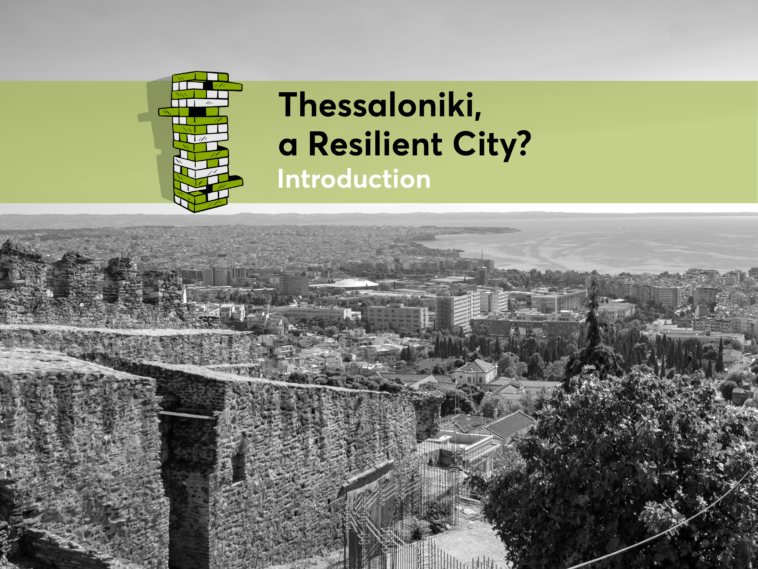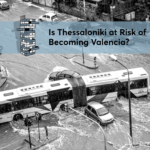Urban Resilience – Climate Neutrality: The Case of Thessaloniki
What is it like to live in a city with a polluted atmosphere? What is it like to walk down the street and not be able to feel even a wisp of cool breeze? How is it that every time it rains, flooding is attributed to extreme weather events? How much danger are we in from the effects of climate change? Should we adapt to these changes, or should we address their causes? By asking more such questions, and taking into account that the impacts of climate change and environmental degradation always affect the poorest, socially marginalized, and most vulnerable people, we began a research project on resilience and climate neutrality in the city of Thessaloniki.
In recent years, European governments have emphatically included the concepts of climate neutrality and urban resilience in their agendas, as goals for the adaptation of cities and human activity to combat climate change. Thessaloniki has been one of the cities included in the Network of 100 Resilient Cities since 2016, with the simultaneous establishment of an Urban Resilience Office. Additionally, since April 2022, it has been selected for the Climate Neutrality Network with a target of 2030. Participation in these networks entails a series of strategies and measures that must be implemented to address climate change and mitigate its impacts.
But what are climate neutrality and urban resilience? Are they solutions for our survival in the face of the climate crisis, or are they merely terms of wishful thinking from European governments and elites? Do they take into account the classist nature of environmental protection and the conflicts that may arise when at odds with the interests of development advocates? How are these reflected in the complex urban environment of a city?
Most importantly, however, we aim to connect the above with academic knowledge, journalistic research, citizens’ experiences, and the issues raised by environmental movements and local collectives. It is definitely not feasible to address all the environmental issues affecting Thessaloniki, so we focus on seven key areas that we consider to be at the heart of the collective right of residents in a city where the environment and environmental interventions can ensure the protection of human life, public health, and social justice.
In the journalistic investigation of the independent publishing cooperative Alterthess, we first examine the very concepts themselves and their ideological and political implications. We then attempt, through documentation and investigation of the most serious environmental issues facing the greater urban area of Thessaloniki, to determine whether the policies being implemented align with the strategic directions set by the relevant authorities to address the new climate challenges.
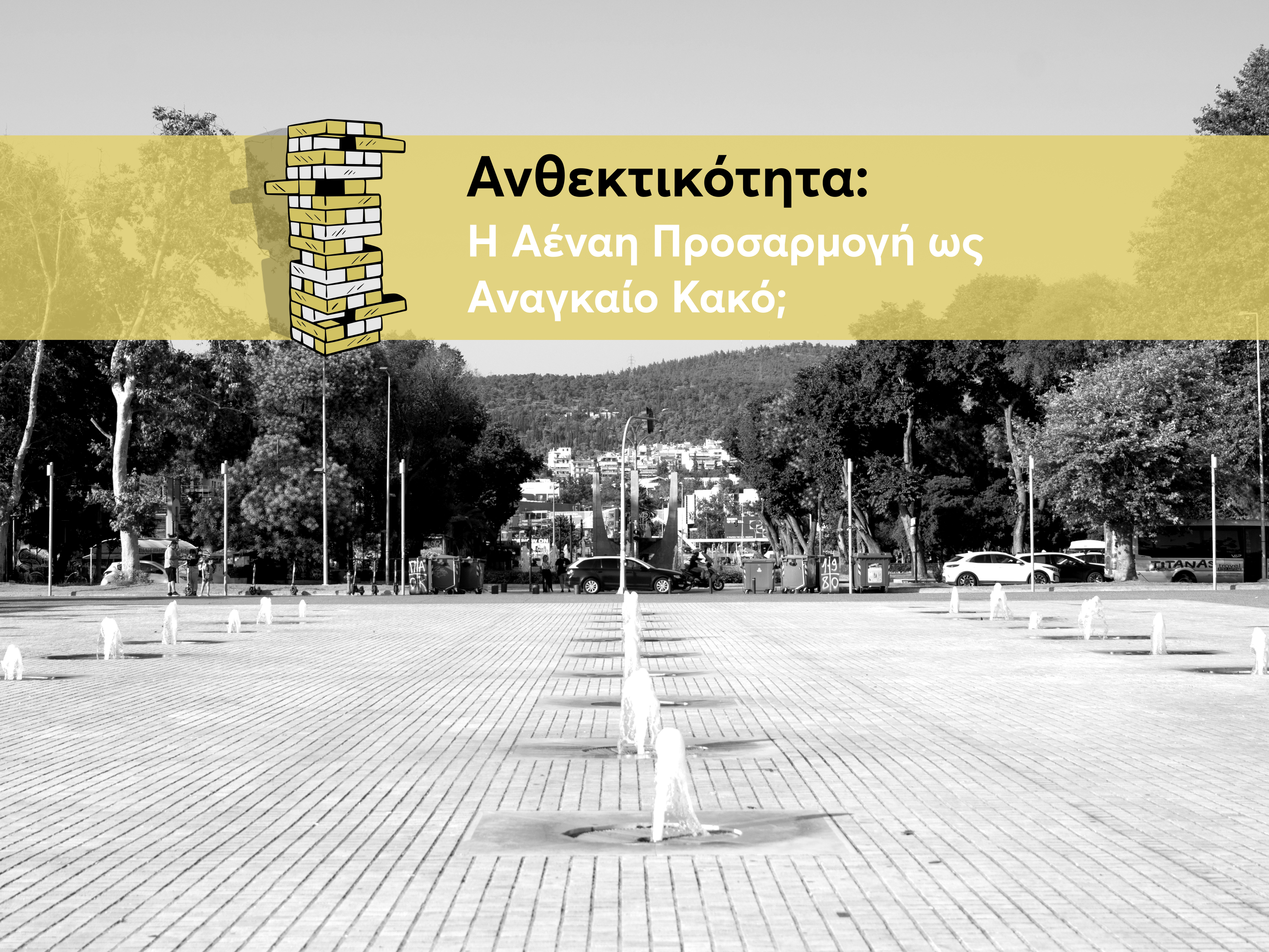
2. Resilience: Endless Adaptation as a Necessary Evil?
Two of the concepts that have gained significant attention in recent years in both public discourse and the formulation of official strategies to address the impacts of the climate crisis are urban resilience and climate neutrality.
The concept of urban resilience, which originated as a term in the field of psychology, was then introduced by C.S. Holling to the field of ecology. It was defined as the amount of disruption an ecosystem can absorb without switching to an alternative stable state. Other theorists define resilience as the time it takes for a system to return to a stable state after a disruption.
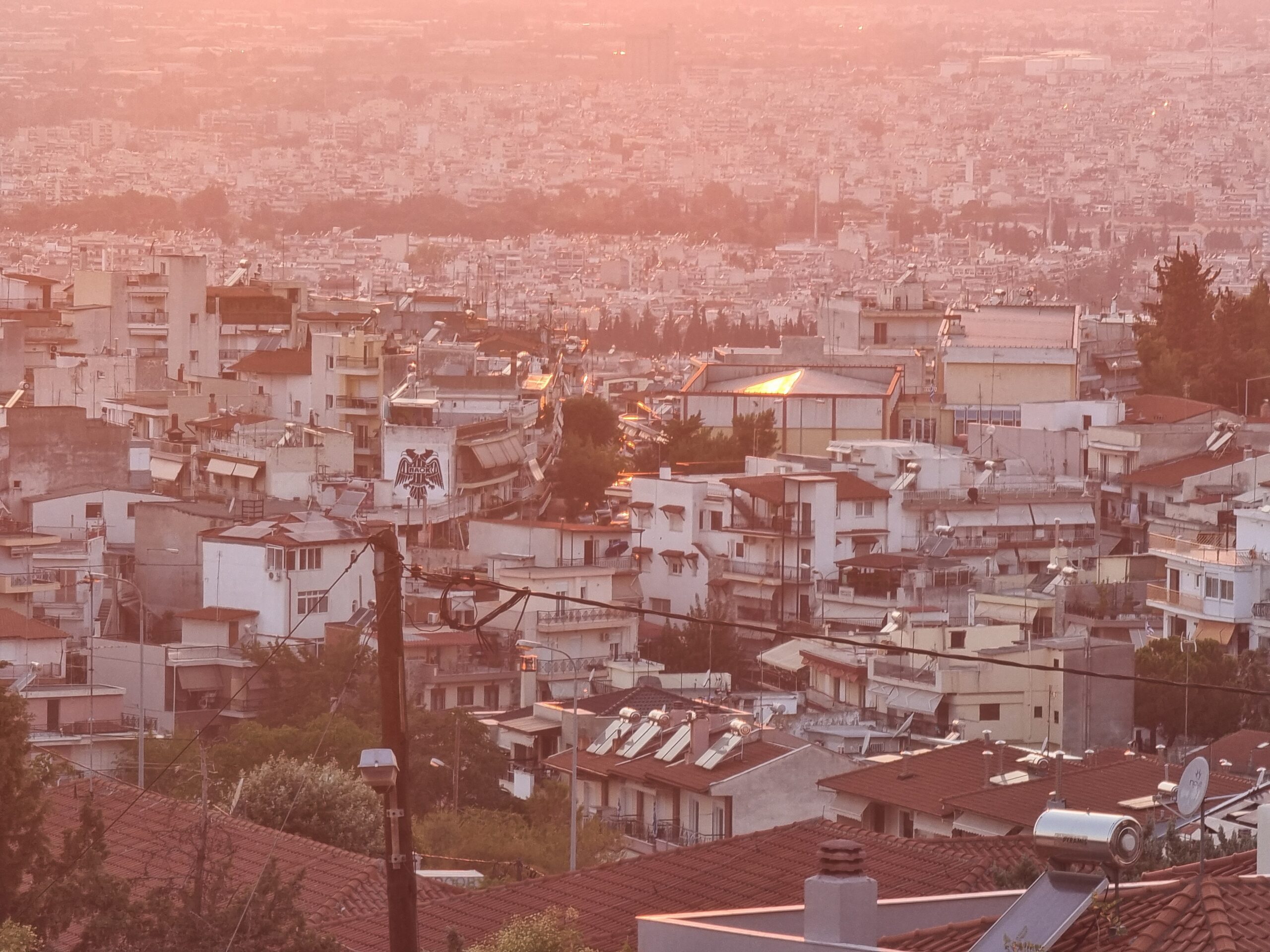
Decades have passed since the term was introduced to the literature, and since then, multiple meanings of the concept have emerged, leading to various policy action plans. According to Alkistis Prepi, an architect and urban planner and Ph.D. recipient from the National Technical University of Athens (NTUA) (her doctoral dissertation, Resilience and Development Planning: The Governance of Adaptation in the 21st Century may be read here),
who spoke to Alterthess, even today “some researchers are trying to find a more radical alternative for the term resilience, aiming at an alternative that might provide a better offensive position in the future. What we need to understand, however, is that the adaptations supported by the concept of resilience, and the adaptations being researched by those trying to provide radical questions and answers, are actually two separate conceptual systems. One is a passive adaptation to external pressures, and the other is a dialectical adaptation that recognizes the possibility of changing the world around us and changing ourselves in the process. However, according to Prepi, despite the search for more radical conceptualizations of resilience, “this specific term produces specific policies and is now a central tool in the dominant narrative and the prevailing development proposals, in the same way as it was introduced by Holling”.
One of the action plans that reflects the search for practical applications of urban resilience is the creation of the “Resilient Cities Network” by the Rockefeller Foundation. This initiative focuses on the ability of residents, communities, structures, and institutions in a city to effectively face and adapt to chronic or sudden pressures, disasters, or crises, and to recover promptly from their consequences without altering the basic functions of the system. While the crises described here mainly refer to natural disasters and climate change, the goals of urban resilience also include large-scale migration and refugee flows and emergency situations such as economic crises, terrorism, cybercrime, etc.
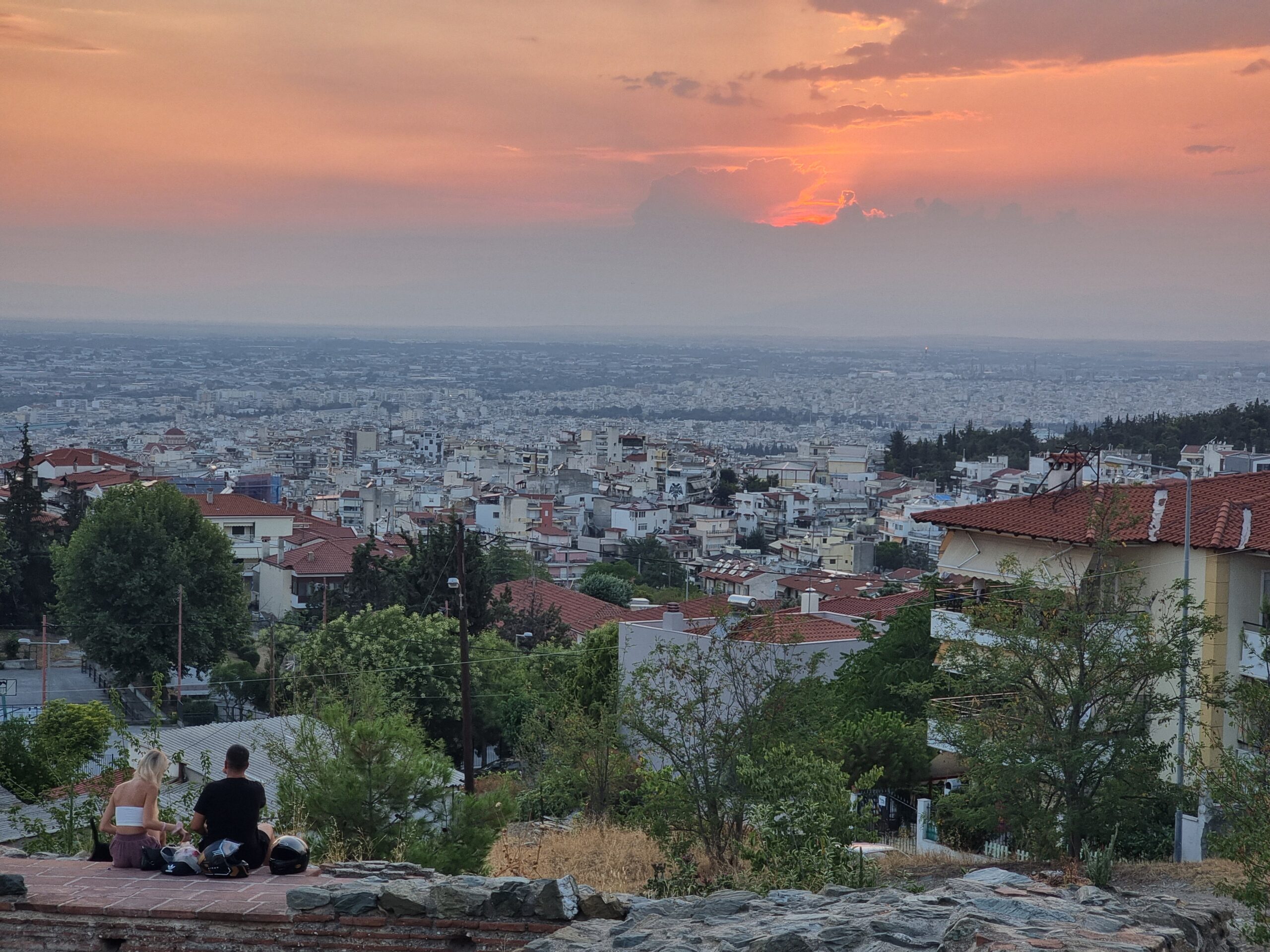
The program, which was initially created with a financial commitment of $100 million from the Rockefeller Foundation, aimed to create a global network of cities allowing for the exchange of experiences and expertise in dealing with these challenges, in accordance with the specific needs and deficits of each city. “Members of the 100 Resilient Cities Network are leading globally, proving that not only is it possible to build urban resilience in every type of city, but it is imperative”, stated Dr. Judith Rodin, president of the Rockefeller Foundation.
After Athens joined the Network in 2014, in March 2016, the then Mayor of Thessaloniki, Giannis Boutaris, announced the establishment of the Urban Resilience Office as part of Thessaloniki’s inclusion in the program.
As Stella Psaropoulou, the Director of the Urban Resilience Office of the Municipality of Thessaloniki, explains to Alterthess, the city’s inclusion in the Network “was achieved through a competitive process, with funding from 2016 to 2019 to form a team, which then evolved and was integrated as an office within the Municipality of Thessaloniki’s services. This provided the opportunity and the tools, as well as for collaboration with global organizations such as the World Bank, to create a roadmap – the resilience strategy – which was drafted in 2017 with a timeframe extending to 2030 (‘Thessaloniki 2020-2030’)”. According to Psaropoulou, “what makes the tools provided unique is the extensive participatory planning, as it was the first time that stakeholders, community groups, and private individuals sat at the same table and collectively shared a common vision. They identified and mapped the challenges that Thessaloniki faces and will face, as well as how the city will develop considering all these challenges”.
Closely linked to the concept of resilience is that of climate neutrality. Climate neutrality is defined as achieving net-zero greenhouse gas emissions (such as carbon dioxide, methane, nitrous oxide, hydrofluorocarbons, and others) by offsetting or balancing these emissions through natural carbon absorption (via natural carbon sinks like forests, oceans, soil, etc.). This is essential, because it has been proven that no artificial method of carbon capture and storage is sufficient to effectively combat the adverse impacts of the climate crisis. In 2019, the European Climate Law was adopted, which also set a binding EU target for a net domestic reduction of greenhouse gas emissions by 2030 and the achievement of climate neutrality by 2050. Among other things, it emphasizes that ecosystem restoration will contribute to maintaining, managing, and enhancing natural carbon sinks while promoting biodiversity and helping to combat climate change.
Intermediate climate goals have been set for 2030 and 2040 as follows: a reduction in net anthropogenic greenhouse gas emissions by at least 55% by 2030 and 80% by 2040 compared to 1990 levels. Achieving these goals takes into account the National Energy and Climate Plan (NECP).
Strategies formulated at the central (European) level are disseminated to national governments (the National Climate Law was passed in 2022 – Law 4936/2022) and subsequently to local governmental organizations (municipalities and regions). These entities are beginning to grapple with new concepts such as resilience and climate neutrality, as well as the obligation to develop related policy plans.
For the municipalities of Thessaloniki and the region of Central Macedonia, a key challenge lies in smoothly and effectively integrating these concepts into their organizational structures and clarifying the roles and responsibilities of their departments and staff in shaping relevant strategies.
In 2019, the Municipality of Thessaloniki, along with 99 other cities, signed the Climate Pact, committing them to support its implementation, the maturation of infrastructure projects, and the exploration of appropriate financing mechanisms and tools. The sectors involved in working toward a climate-neutral Thessaloniki include transportation and logistics, solid waste management, land use and environmental management, and innovative smart city and governance solutions. Notably, as outlined in a related announcement, in order to reduce emissions, the Municipality of Thessaloniki will proceed with extensive installation of renewable energy sources in public spaces and buildings, alongside plans for the renovation and upgrading of its building stock. The strategy also includes promoting alternative forms of mobility, enhancing micro-mobility, and encouraging greater use of public transportation.
Parallel interventions are being planned to enhance urban green spaces. These include planting trees and replacing low vegetation with taller greenery, with the aim of reducing surface and atmospheric temperatures, preventing urban heat islands, absorbing noise, and protecting biodiversity. Regarding waste management, in collaboration with FODSA (the Solid Waste Management Agency), composting facilities will be created, and the recycling sector will be strengthened. Through the implementation of the Climate Neutrality Action Plan, the Municipality of Thessaloniki aims to achieve an 80% reduction in emissions by 2030.
The Climate Pact was co-signed by the Municipality of Thessaloniki, the Ministry of Environment and Energy, the Ministry of the Interior – Macedonia-Thrace Sector, Aristotle University of Thessaloniki (AUTH), University of Macedonia (UoM), CERTH, International Hellenic University (IHU), HEDNO S.A., the Center for Renewable Energy Sources and Saving (CRES), EYATH S.A., FODSA, OASTH S.A., HELEXPO S.A., MATh S.A., TEE/TKM, the Thessaloniki Chamber of Commerce and Industry (TCCI), the Hellenic Confederation of Professionals, Craftsmen & Merchants (GSEVEE), the Federation of Industries of Greece, the Thessaloniki Traders Association, and the Thessaloniki Hotel Association.
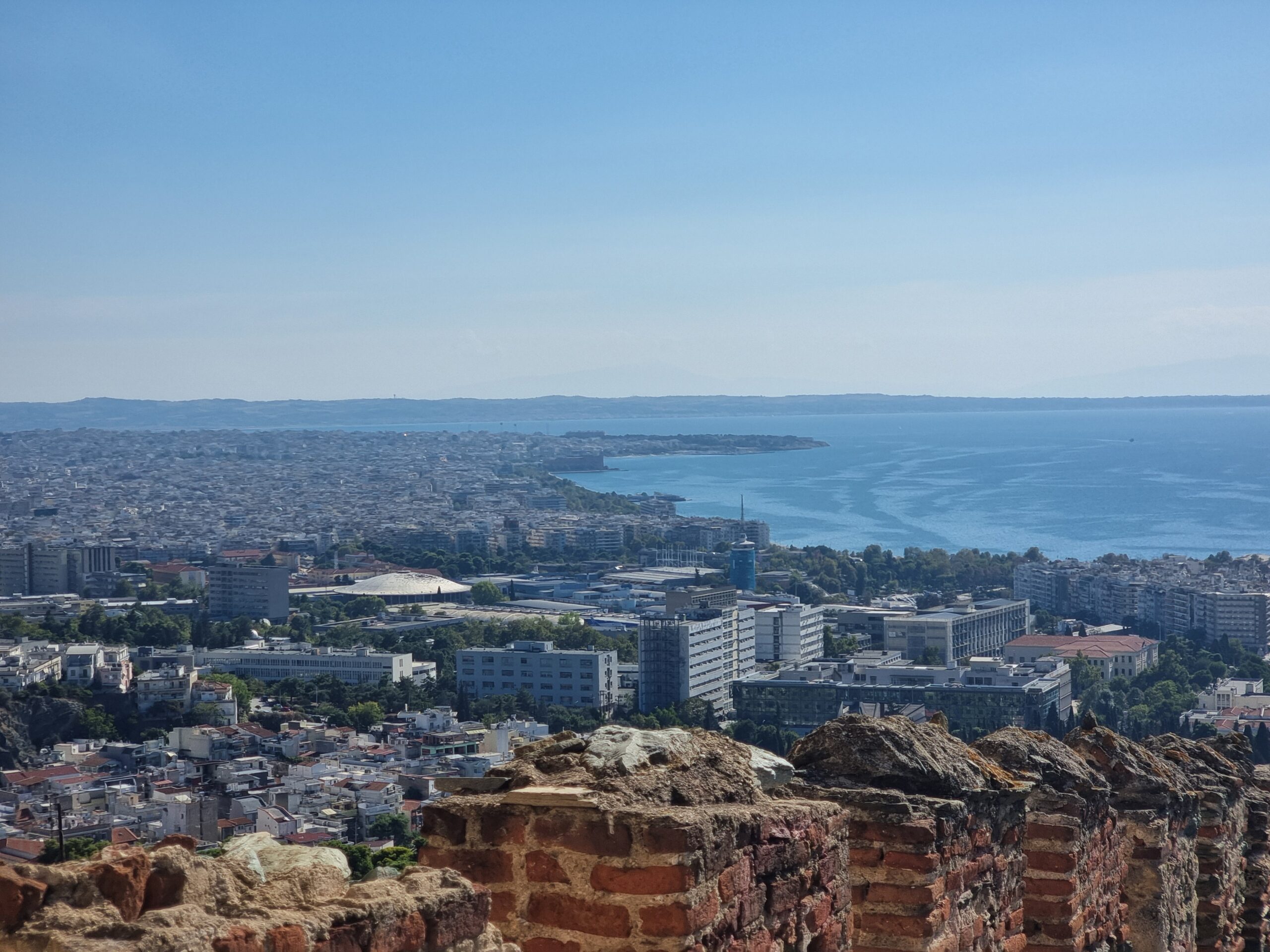
Similarly, the Region of Central Macedonia has developed a strategy through its Regional Climate Adaptation Plan (RCAP), which primarily aims to reduce the region’s vulnerability to the impacts of climate change and to strengthen its resilience against it.
However, discussions about resilience and the gradual transition to climate neutrality appear to have gaps. Resilience tools often focus mainly on adaptation and less on mitigating impacts, let alone addressing the root causes of the problem. As long as these root causes persist, their effects will continue to impact people, cities, and systems, which will constantly need to adapt.
In the words of Alkistis Prepi, “networking is often not truly a vehicle for addressing the causes of climate change, because tools like resilience do not address the causes, but always the consequences”.
“So far, any resilience plans that have been developed have not had any substantial material impact. From the beginning, this was not a program that would produce a tangible material outcome, such as a bridge or a dam. It was always a program that would provide some guidance and offer know-how on these issues. So, in essence, we cannot say that anything has been implemented as a project that can be evaluated as such”, Prepi stated in an interview with Alterthess.
Stella Psaropoulou confirms the non-binding nature of the plans being developed regarding resilience and climate neutrality, emphasizing that “Decisions made by a municipality’s office cannot be binding. The municipality produces an operational and strategic planthat is not created behind closed doors, it is not made by one organization, nor is it based on a completed legislative framework. Instead, it allows the city to involve itself in addressing the basic needs it may have.” These issues, as Psaropoulou states, arise from the needs of organizations, entrepreneurs, economic sectors, civil society, and even the school community, which may differ. “All of this should be incorporated into the operational and strategic plan of the city. Therefore, it is not binding, but rather about working collectively, and we should react and learn to work in the same way – this is the essence of resilience”.
As part of our research, beyond any contradictions, gaps, or imperfections these strategies may have, we explore the issue of resilience and climate neutrality by setting up a hypothetical axis. What should have already been completed? What results have the Strategic Studies produced? And finally What is being planned that contradicts the agreed upon directions?
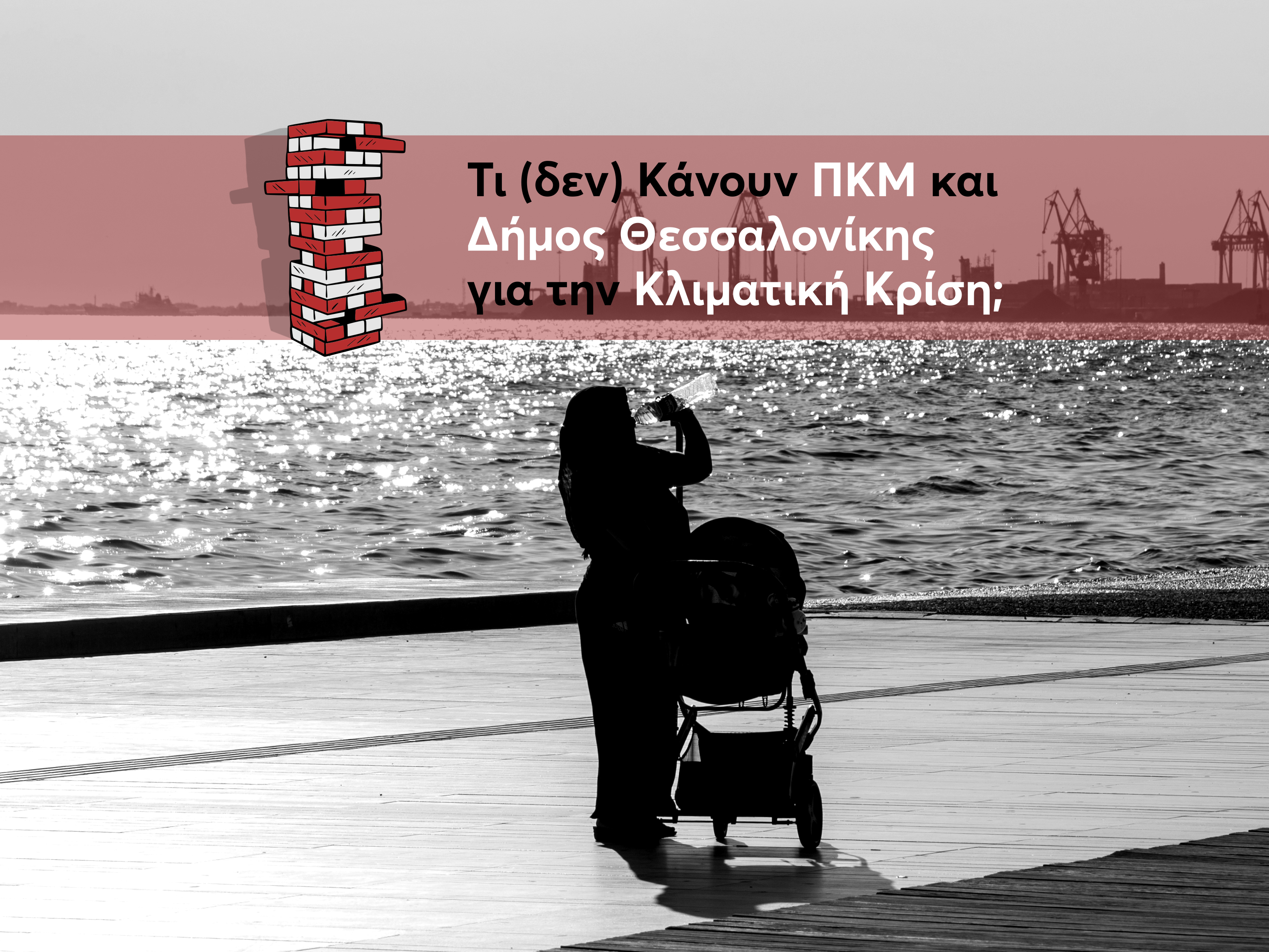
3. What the Region of Central Macedonia and the Municipality of Thessaloniki Are Doing and Not Doing About the Climate Crisis
Addressing the climate crisis and its effects involves all institutional and governmental entities, from the national government to the local community of each region.
In Greece, the central government approaches the climate crisis as it does other crises: by slapping on a band-aid, that is with reactive measures when the crisis is already ongoing, rather than proactive strategies. For example, the use of the Unified Emergency Number 112 exemplifies the state’s crisis-management mentality and foreshadows how it will deal with climate crises. During severe weather events like wildfires or floods, the government primarily sends SMS alerts via 112, advising citizens to evacuate or seek safe areas.
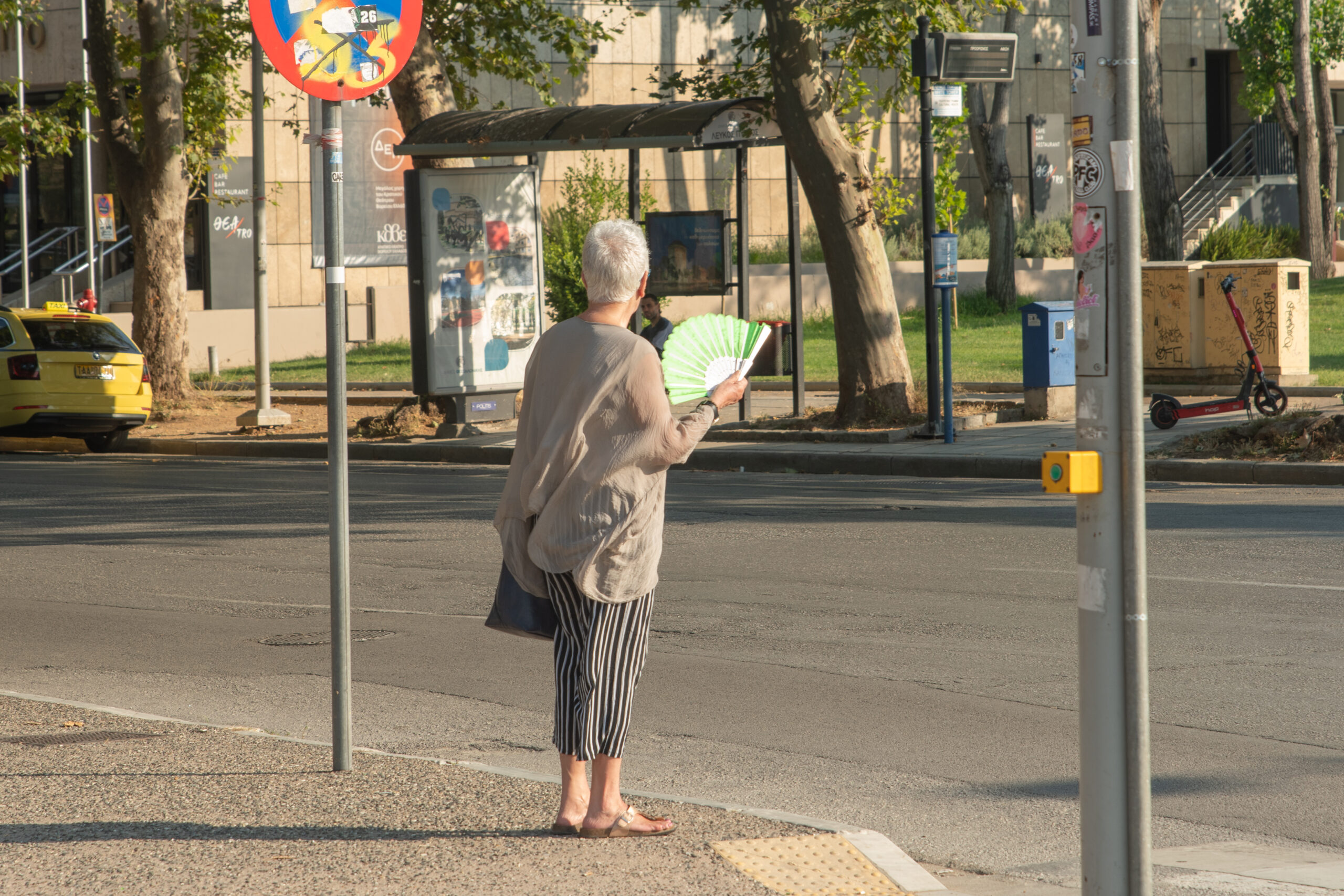
Beyond issuing alerts and convening meetings with the media present, the central government funds local government flood protection projects. Many scientists, as well as opposition parties, have already criticized the fact that the significant resources of the Recovery Fund did not include substantial funding for projects addressing the climate crisis.
Given this context, coupled with the chronic underfunding of local governments since the austerity years, it’s important to examine the actions of the Region of Central Macedonia (RCM) and the Municipality of Thessaloniki regarding climate crisis mitigation.
The Region of Central Macedonia (RCM), has adopted a Regional Climate Change Adaptation Plan (RCCAP). However, implementation has yet to begin, hindered by funding shortages and the need for coordination with other public and private entities has been stressed. On the other hand, as people familiar with the plan have commented to Alterthess, it is a rather vague document that does not commit the Regional Administration to specific actions.
RCM officials, like Thessaloniki’s Vice Governor Kostas Gioutikas, acknowledge limited funding tools, with EU structural funds (ESPA) as the main resource, which falls short of the needs for large-scale infrastructure. Despite challenges, the RCM has carried out local stream cleanings in areas like Scholari, Melissourgos, and Arethousa.
As the Deputy Regional Governor of Thessaloniki, Kostas Gioutikas, states to Alterthess, “The NSRF is the only funding tool available to the Region of Central Macedonia, but it is not sufficient for the truly large-scale infrastructure projects that the city of Thessaloniki particularly needs.” According to Mr. Gioutikas, despite the lack of adequate resources, the Region has managed to clean streams in the broader area, such as the streams of Scholari, Melissourgos, Apollonia, the eastern regional ditch, Arethousa, and others.
At the same time, the administration of the Region of Central Macedonia (RCM), which is friendly toward the government, supports projects and decisions that in no way align with the principles of adapting to climate change. The support of Tzitzikostas’ administration for the construction of the elevated expressway (FlyOver), which will lead to an increase in the use of private vehicles, hardly seems like a choice aimed at reducing greenhouse gas emissions. Similarly, the support from the regional administration and the Municipality of Thessaloniki for the decision to keep the Thessaloniki International Fair (TIF) in the city center appears to disregard the pressing need to increase green spaces within the urban fabric, which are essential for lowering high temperatures and absorbing large volumes of water in the event of flooding.

For its part, the Municipality of Thessaloniki has its own Sustainable Urban Mobility Plan, which takes into account the needs of adapting to the climate crisis by reducing the use of private cars and increasing the use of public transportation, bicycles, and more. At the same time, the Municipality of Thessaloniki is participating in the Network of 100 Resilient Cities, which provides municipalities with expertise and documentation on how a city can become resilient to crises such as the climate crisis.
However, the documents and the Municipality’s participation in such Networks do not bind the current municipal administration to follow policies that lead to climate neutrality and urban resilience. For instance, while the Municipality may sign agreements to reduce private car use, it might simultaneously create new parking spaces throughout the city, resulting in outcomes contrary to the desired goals.
At the same time, the significant bureaucracy and slow pace of implementing public projects do not support the creation of a climate-neutral and resilient city. The projects currently being executed or set to begin soon were designed a decade ago by a different municipal administration, at a time when addressing the climate crisis was not a priority. As a result, even if a mayor or deputy mayor wishes to pursue projects aligned with the standards for a resilient city, they simply cannot. They either have to attempt minor improvements to projects planned years ago or design new projects and studies, which will likely be implemented by another administration in about ten years. However, in ten years, it will be too late, as the pace at which the climate crisis intensifies each year is exceptionally rapid.
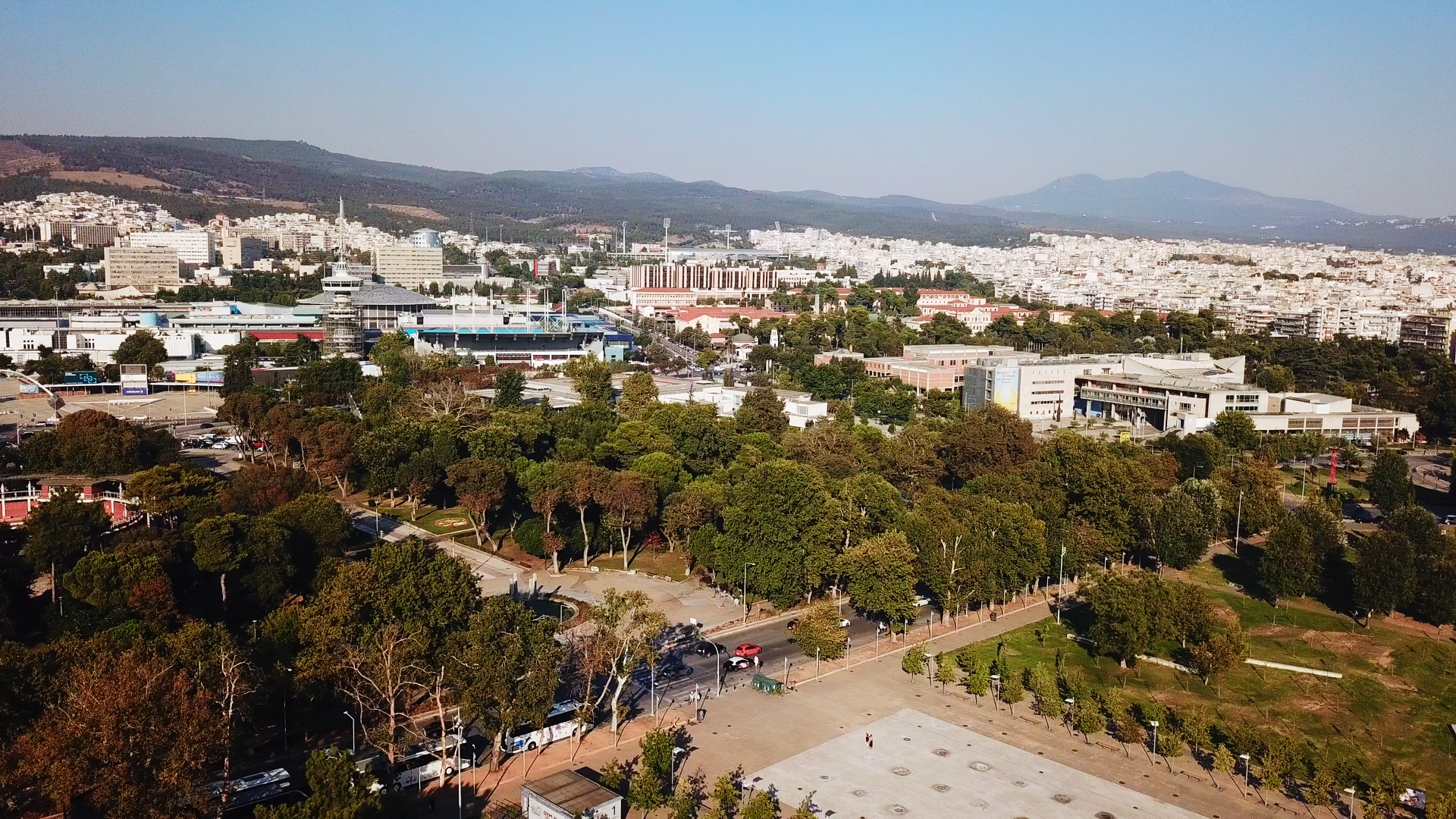
Speaking to Alterthess, Thessaloniki’s Deputy Mayor for Technical Works, Environment, and Sustainable Mobility, Prodromos Nikiforidis, acknowledged that the Sustainable Urban Mobility Plan (SUMP) is a very ambitious project. However, as he stated, its implementation requires additional approvals, studies, and funding. Mr. Nikiforidis also referred to a tendency toward exaggeration, which does not lead to realistic and actionable measures. He distanced himself from the construction of the FlyOver expressway project, noting that “we are prisoners of a construction site that channels all cars into the city center.”
Andreas Karadakis, from the Independent Department of Operational Planning and Monitoring of Development Programs at the Municipality of Thessaloniki, highlighted to Alterthess the operational challenges the Municipality faces in implementing plans for the city’s adaptation to the climate crisis. As he pointed out, municipalities have consistently had access to funding tools over time. However, it is the municipal administrations that must have the political will to follow through with the plans for urban resilience and climate neutrality and integrate them into the Technical Programs developed annually.
4. The Environmental Challenges of Thessaloniki
The environmental condition of Thessaloniki has significant impact, strongly affecting the daily lives of its citizens, particularly the most vulnerable.
In our effort to outline this situation, we chose to base our journalistic investigation on seven key areas. These areas, in our view, reflect the most pressing environmental problems facing the city today, which require appropriate and, above all, timely action to “fortify” it against the climate crisis.
More specifically, we decided to focus on the following:
One of the major challenges faced by the responsible authorities and residents of Thessaloniki is the periodic heavy and intense rainfall, which causes the well-known flooding issues in the city center.
With memories of last year’s experience with Storm Daniel in the region of Thessaly, and the fresh images of the devastating floods in Valencia still vivid, the need for action and serious flood prevention planning has become imperative.
In recent summers, our country has experienced severe wildfires that burn and destroy thousands of acres of forest, occurring both before and after the so-called fire season.
Given this, along with the fact that the suburban forest of Seich Sou is the most important green lung of Thessaloniki, its protection should undoubtedly be a top priority on the agenda of the responsible authorities.
Last year’s condemnation of our country by the European Court for exceeding the limit values of PM10 particulate matter (which, notably, has significant impacts on human health) in Thessaloniki loudly sounded the alarm about the chronic deterioration of the city’s air quality. Or did it?
The suspended particles (along with other pollutants) and the acute, long standing issue of odor in the western parts of the city (Evosmos-Kordelio) compel us to investigate the causes of air pollution, as well as the measures that have (or have not) been taken to address the problem.
Drastic reduction in private car use, coupled with more modern and safe public transportation options, pedestrian pathways, and extensive cycling networks are among the key pillars of a city’s adaptation to the climate crisis.
However, the massive delays in completing the main Metro line, the chronic neglect of urban buses, and the construction of the Flyover expressway create a scenario that seems more likely to worsen rather than improve the well-documented traffic issue (not to mention the daily lives of the city’s residents).
If the goal is resilience, the protection of a city’s wetlands and waterways must undoubtedly be a priority. In Thessaloniki, however, many of these areas have been significantly degraded or destroyed due to urban expansion and human activity.
The Tsairia wetlands in the Peraia marsh, the Kalohori wetland, and numerous water courses in the city come under the microscope in our research to determine if, and to what extent, resilience plans are being followed and implemented.
The Thermaikos Gulf is an extremely important wetland system for the city of Thessaloniki and the quality of life of its residents.
However, the significant rise in water temperatures due to the climate crisis, combined with pollution from urban wastewater, agricultural runoff, and industrial activities in the area, has long been sounding the alarm about the gulf’s condition.
What plans, then, are in place to protect this vital ecosystem, and how are they linked to the city’s inclusion in the Network of 100 Resilient Cities?
With just 2 square meters of green space per resident, Thessaloniki falls far short of the minimum threshold of 8-10 square meters set by the World Health Organization for the sustainability of modern cities.
This glaring lack of green space, combined with excessively dense construction, significantly contributes to the urban heat island effect and the high temperatures in the city center, especially during the summer months.
And yet, the plans being devised by the authorities seem to pay little attention to the needs of the residents of modern cities.
Credits
Research and editing: Jason Bantios, Stavroula Poulimeni, Tilemachos Fassoulas
Video: Theofilos Kalaitzidis
Sound recording – graphics: Menelaos Exioglou
Photos: Aphrodite Michaelidou
English Translation: Phoebe Holland
